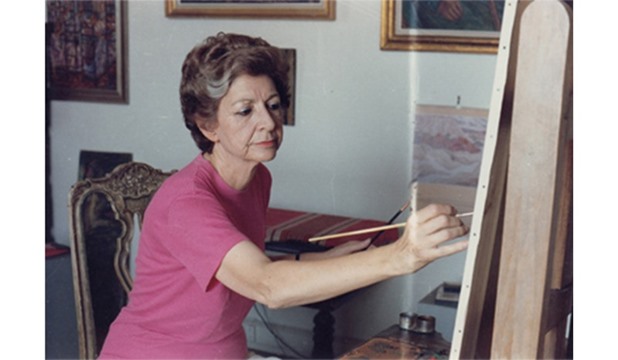(1924 – 1989)
Inji was born into a wealthy family from Cairo’s francophone aristocracy on April 16, 1924. She received a strict Catholic education prior to studying at the Lycée Français in Cairo where she was first introduced to Marxism. Inji began painting from a young age and was a member of the influential Art et Liberté (‘Art and Freedom’) movement, which was a group of artists, intellectuals and communists with an anti-imperialist orientation. It was her immersion within this sphere that helped to cement her political ideologies and influence her engagement in anti-militant activity for close to 15 years both through her art and outside of it.
Her mother, Sahla Efflatoun, was a fiercely determined woman who had divorced her husband soon after the birth of Inji and her sister Gulperie. Sahla opened a dressmakers shop on Antikikhana street in Cairo, and shortly after she emerged as Egypt’s preeminent female designer, a pioneering spirit not lost on Inji. As Sahla became a national treasure for her creations of fashion, she eventually would become the stylist to the royal family and other high-profile members of the Egyptian aristocracy. Sahla’s inspiring example bore an indelible influence on Inji’s upbringing and subsequent career, as after Inji sought to leave her schooling at the Sacred Heart Convent, due to her free-spirit being incompatible with the rigors and regimented nature of the school run by nuns, Sahla obliged and her daughter completed her studies at the Lycée Français.
Surrealist Period
At the tender age of 15, Inji’s outlook on life was shaped by a curious yet fateful coincidence. The great pioneer, Mahmoud Said (1897-1964), came to visit her family estate and her mother Sahla proudly showed Inji’s early drawings to him, which at the time were illustrations of her sister Gulperie’s poems. After looking thoroughly through her work, Said surmised that Inji had a gift for painting in her, an innate talent that needed to be honed under the tutelage of professional artists. This was a crucial turning point in her life as Inji would then become a diligent student of the reputed painter Kamel El Telmissany (1915-1972), who was a member of the influential Art et Liberté anti-fascist artistic movement founded by the trio of George Henein (1914-1973), Ramses Younan (1913-1966) and Fouad Kamel (1919-1973).
This partnership bore immediate results as Inji’s painting abilities underwent a rapid process of blossoming and maturation, given her innate promise as an artist. By 1942, she had participated in a number of avant-garde Art et Liberté group exhibitions with its founding members, her elder contemporaries, including the distinguished Mahmoud Said. This was in essence the first period in Inji’s artistic career, dominated by a surrealist inclination that was the preferred medium of the Art et Liberté movement’s cadre.
In 1945 she took part in the creation of the Ligue des Jeunes Femmes des Universités et des Instituts (League of Young Women of Institutes and Universities) which promoted anti-colonist, left-wing ideas and campaigned for gender equality. For a short period of time, Inji worked as a journalist and teacher, publishing several manifestos and participating with other women and intellectuals in several initiatives across Egypt and Europe advocating for peace and women’s rights. Throughout the 1950s many of the works that Inji produced focused heavily on themes of socialist realism; she painted local people, peasants and revisited historical events under colonial rule such as her seminal ink and pencil reproductions of the infamous Dinshaway Massacre.
Up until 1952, Inji became further steeped in the practice of painting in the esteemed company of talents including Margot Veillon (1907-2003) and Hamed Abdallah (1917-1985) and most significantly under the instruction of the great Ragheb Ayad (1892-1982) at the Faculty of Fine Arts in Cairo, where she further developed and refined her passion for painting.
Activist Period
That same year marked another milestone in her career as Inji held a solo exhibition, the very first of an extensive catalogue of shows that would see her exploits featured all across the globe. It was during this stage that Inji demonstrated her initial interest in addressing socio-political issues through her art. As a woman living in Nasser’s Egypt, Inji’s newfound predilection for exploring and exposing the litany of injustices that were so evident at the time, from women’s rights, to anti-fascism, colonialism and general widespread oppression, became the driving force behind what are regarded as the most venerated works in her extensive portfolio.
This period also effected drastic changes in not only Inji’s personal outlook, but also the fateful trajectory her life would take as a result of her staunchly held political views. She went on to author three books, the first of which was titled ‘Eighty Million Women With Us,’ for which the great Egyptian author Taha Hussein wrote the foreword for. ‘We Egyptian Women’ and ‘Peace and Evacuation,’ completed this trio, with forewords written by Abdel Rahman El Refaie and Aziz Fahmy respectively, and till this day they stand as testaments to Inji’s indispensable role not only as a painter, but as an author, activist and public figurehead in the various socio-political movements she admirably made her life’s mission.
Amid mounting pressure from her family to move to Paris to complete her formal education as an artist, Inji remained self-assured in her conviction to never abandon her Egyptian heritage and the obligations she felt towards her fellow Egyptians. She sought this self-affirmation given her privileged aristocratic upbringing that saw her speak French more than Arabic and an early life which was almost exclusively spent in the presence of foreigners and the elite milieu that she felt threatened to sever the roots to her homeland.
Of this formative experience in her life, Inji recollected: “Eighteen years have slipped away from my life in this secluded society, even my own native language I could not speak it to the extent that when I began frequenting the people of my country I could not even communicate with them in their language. What a misery I felt to be uprooted.”
As Inji continued to mingle with Egypt’s leftist intelligentsia, breaking free from the bonds of her aristocratic background, she became fully immersed in the hustle and bustle and authentic flavor of Egyptian life and society. It was not long before Inji found her calling at the epicenter of the anti-fascist movement as a feminst-communist, and she was well aware of the risk posed to herself of potentially being imprisoned as a result of her views, as communism was outlawed in Nasser’s Egypt.
Inji continued to operate on the fringes of what was politically accepted at the time, marrying out of her socio-economic status to a husband from a humble background. However, this time spent as a married woman, which she remembered fondly as her happiest days, was short-lived after her husband of only three years succumbed to a brain hemorrhage that took his life.
Prison Period
After this transformative incident, Inji’s resolve to play a leading role in her country’s turbulent political environment was only strengthened, as she thrust herself into this progressive anti-establishment stance. In 1959, the most defining moment of Inji’s life came when she was imprisoned for four years, serving her sentence across a series of women’s prisons in the deserts surrounding Cairo. To this day, Inji’s prison years remain, in such an eventful and inspiring life, her most remarkable period, a legacy to not only her acumen as an artist but her exemplary and persevering nature as a human being above all else.
Critics as a result consider this period as having produced many of Inji most celebrated and emotionally challenging works. Her palette, manipulation of light and shadow, vivid expressionism and thoughtful subject matter all served to show her true ingenuity as an artist, as she became perfectly positioned to devote her talents to her most dearly-held personal convictions as an inmate amongst women prisoners serving time for disparate, although also presumably unjust, reasons. The paintings of this period embodied a candid emotional quality that seeped out of these canvases portraying the grim realities of prison life, not least for women in Nasser’s Egypt.
The ever-present cell bars became a frequent motif across these works, adding a depth of perspective yet simultaneously a pronounced separation between the viewer and the subjects of these works. Another constant motif that Inji would repeatedly portray was the ‘Inji Tree,’ which she painted a multitude of times often in different colors and mediums. This arboreal subject which would always appear as a similar rendition of the same tree became subsequently known as the ‘Inji Tree’ since it was the only tree she could see outside of her small cell window while incarcerated. As a result, Inji habitually returned to depicting this motif as a meditative practice as she sought to find what little beauty and optimism there was to cling onto during these trying years.
The works that Inji produced throughout this time are often considered to be the highlight of her career partially due to their value as documentary evidence and perhaps also because they are testament to her struggle and survival during incarceration. Although a cruel and unforgiving experience, for Inji, her prison period as it so happened, became the perfect vehicle through which to demonstrate most impactfully and poignantly the plight of Egypt’s disadvantaged, impoverished and discriminated in a way that solidified her pioneering status as Egypt’s first female artist-activist.
‘The Others’ Period
Reinventing herself once again, Inji’s art took a new direction after she became a free woman once more. One of the predominant focuses of Inji’s painting revolved around the exposition of the relatively underexplored lives of the popular folk of Egypt’s rural communities, those modest yet brave laborers and peasants who spent their days in toilsome work in Egypt’s agricultural countryside towns and villages, whom she termed ‘The Others.’ This term referred to the downtrodden, the peasant-class, the poor, weak, disadvantaged and the oppressed classes of peoples in Egyptian life, it was everyone whom she felt was suffering the injustices of a cruel system and paralyzed by its effects.
Inji became preoccupied with portraying the indulgences, practices and communities of these humble peasantry; from workers in the Egyptian textile hub of Akhmim, to fisherman, farmers, builders, railway workers and so forth all across the banks of the bountiful Nile river. Inji never abandoned her innate ability to accentuate the beauty of nature that these rural regions abounded with, even less so that intangible and infectious spirit of these popular folk that mirrored the charming purity of the environment that surrounded them. Inji steadfastly sought to make the lives of these forgotten masses the central protagonists in her work, and amongst them, she positioned the plight of the Egyptian woman as a central and indeed heroic figure in the story of modern Egypt.
As she emerged from her prison period years, Inji harbored a bursting desire and yearning for the serenity and detachment that immersing oneself in nature inevitably brings. She moved into her countryside house in Kafr Shokr, and it was there on her plot of idyllic farmland that she began the next period of her artistic journey. From its towering pigeon huts and verdant foliage, to majestic date palm trees dotting the horizon and the myriad of colorful fresh fruit and vegetables that the fertile soil brought forth, and the celebrations of harvest that ensued, she studiously observed and illustrated the peasants doing their daily chores, a duty so simple yet satisfying in its purpose and timeless significance.
It was this period in which Inji was able to achieve another milestone in her versatility of technique, as she moved into a phase of pointillism, where her canvases became replete with dots and small chunky lines attributing them a rhythmic atmosphere, perpetually in motion, somewhat reminiscent of the style that Van Gogh pioneered. Inji however, true to form, managed to accomplish this foray into a brand of pointillism in her own unique way, most notably, she often left portions of the canvas blank rather than saturating its entirety with paint. The inclusion of these blank white spaces spoke an artistic language of their own and today are one of the admired hallmarks of Inji’s style of painting.
Of this period spent capturing the lives of Egypt’s rural communities Inji said: “I was fully indulged with life in the countryside and my village to the extent that my eyes became blurred and I felt as though I was seeing so many colors at once. It was almost enough to cause me to faint, so I began a period from 1964 to 1973 that carries a strong feeling bursting with vivid colors and movement and some white lines that penetrate through the canvases.”
Honors and Accolades
Inji enjoyed many prestigious awards throughout her life, 1957 saw the first of these accolades as she was the recipient of the Salon du Caire (‘Cairo Salon’) prize and shortly after in 1959, she received the first-place award from the Egyptian Ministry of Culture for her paintings. From 1953 to 1954 she exhibited two of her works, ‘The Descendant of Hatshepsut’ and ‘Portrait of a Nubian Girl,’ at the Sao Paolo Biennale alongside works from one of her mentors, and the father of Modern Egyptian art, Mahmoud Said.
By 1964 onwards, Inji had garnered enough recognition within the international art community to merit her exhibitions in Rome, Berlin, Paris, Belgrade and beyond, as her works gained more prominence amongst European and international collectors. In 1975, she held a large exhibition in Moscow before other solo shows across Dresden, East Berlin, Warsaw, Kuwait, Prague, Sofia and three showings at the Biennale Venezia in Italy.
Inji was appointed Art Commissary for three editions of the ‘Contemporary Art in Egypt’ exhibition held by the Galleria Museum in Paris in 1971, 1974 and 1976. In 1979, she saw her art exhibit for the first time on the Indian subcontinent in New Delhi, and in Alabama in the United States, becoming one of the first Egyptian artists to have achieved this level of exposure in Asia and the Americas. In 1984, the culmination of Inji’s artistic journey saw her duly decorated with the Chevalier dans L’Ordre des Arts et des Lettres, the highest civilian merit in France, by the French Minister of Culture at the time, Jacques Lang. On April 17, 1989, Inji Efflatoun passed away, marking the end of the illustrious life and career of arguably Egypt’s most significant artist-activist.
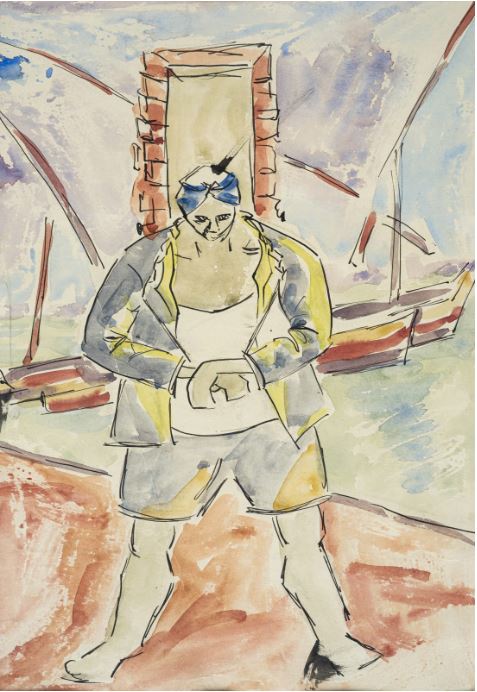
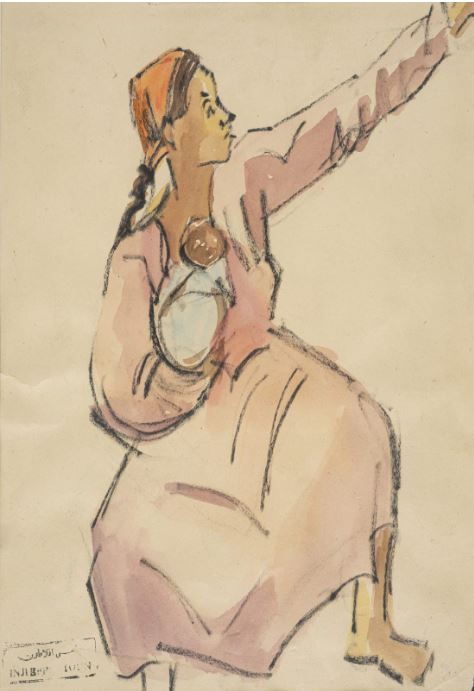
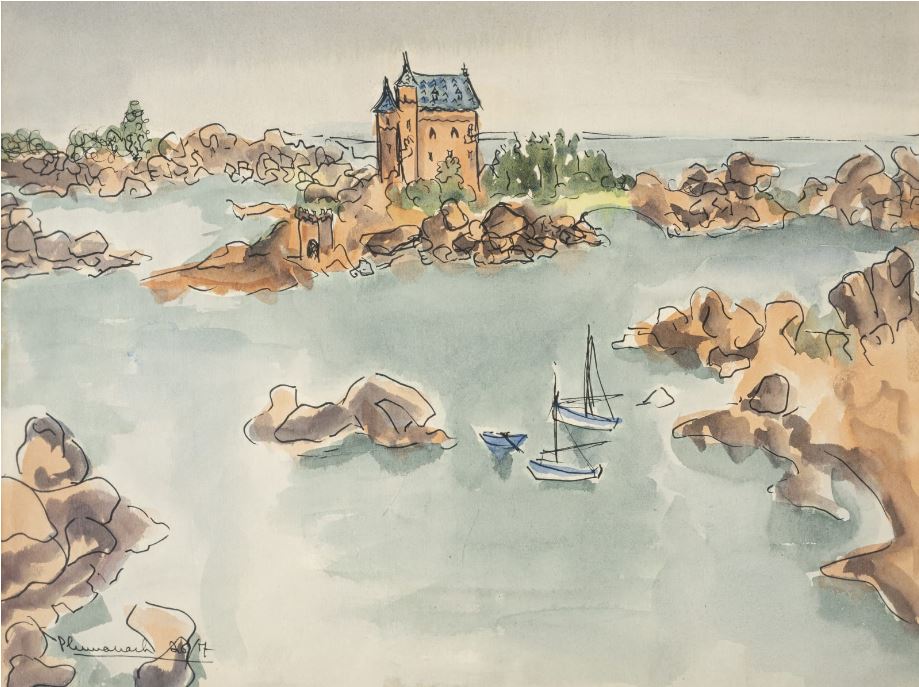
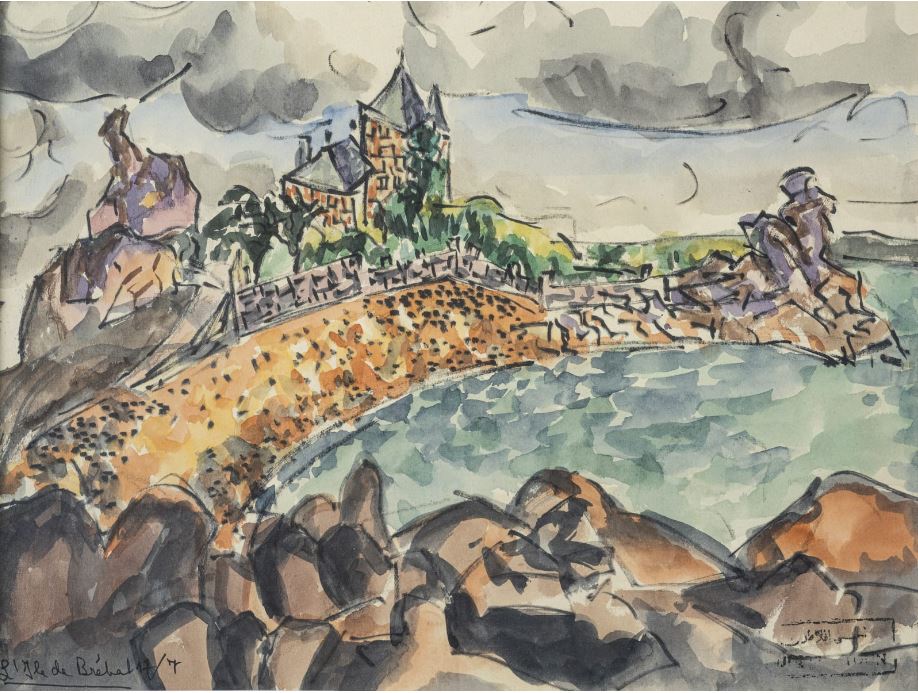
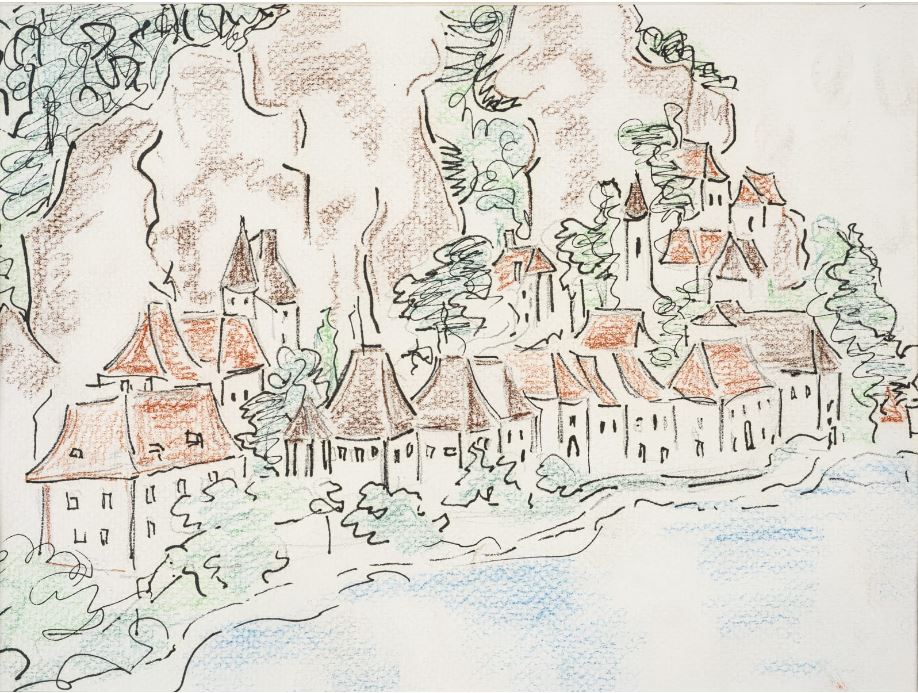
Biography and artworks provided by Safarkhan Gallery, Cairo.
